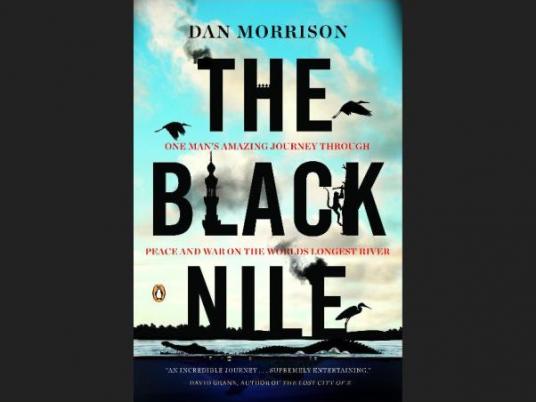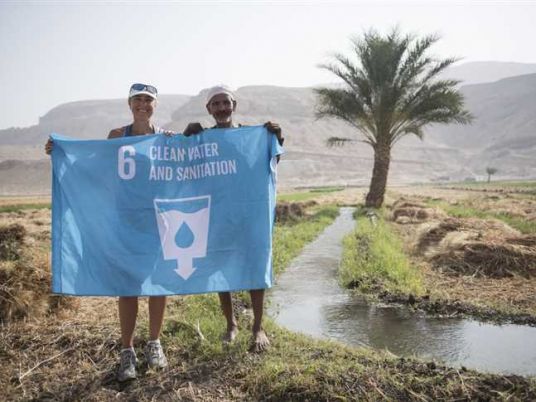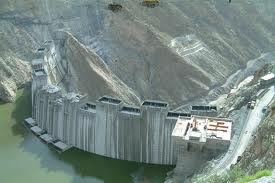
As Sudan negotiated its Comprehensive Peace Agreement, foreign correspondent Dan Morrison journeyed down the Nile from its headwaters at Lake Victoria to Rosetta in the delta. It was the first time such a trip had been attempted, much less written about, in several decades — wars in Uganda, Ethiopia and Sudan had made the trip too treacherous.
The story of the journey, "The Black Nile," published in 2010 by Penguin, is difficult to categorize. It is part travel writing, part reportage — but not sitting easily in either camp. It has sharper, more political dimensions than the usual travel writing fare, but is less argumentative and more graphic than most reportage.
It could be called a book of encounters — with the characters of the journey, with the sucking, squelching Nile mud, and with the river itself. At a stretch, it could be called environmental writing.
We come face-to-face with acres of feral hyacinth, mega-dams, wetlands-draining irrigation canals — in effect, all that happens upriver adjusts the quality and quantity of flow under the Qasr al-Nil Bridge, Cairo.
Morrison spoke to Egypt Independent from New Delhi, where he is working on a second book about the Ganges river.
When I asked the author exactly what kind of book he had written, he replied, “I can’t tell. Hugh Pope in the Wall Street Journal said if the book succeeds, it succeeds despite the fact it doesn’t have a central argument or central thesis at all — I wrote about what I encountered.”
With its multitude of characters, its many anonymous, passing faces, with the sheer hard slog of travelling down its length, the book impresses on us the scale of the Nile. Knowing it is the world’s longest river is one thing; comprehending this is another. The Nile dwarfs the human scale to that the extent the river in its entirety becomes almost an abstraction. It is harder to worry about your actions when the consequences will be 3,000 miles downriver, through areas contested by warlords, and across two international borders, by the end of the month.
Though the Egyptian leg lasts only 30 pages, Egypt’s riparian policy casts a long shadow over the journey to its borders.
“Egypt has for millennia viewed the Nile as its property, and Egyptians have been tracking and manipulating the river since the dawn of civilization,” Morrison writes.
“Business cards at the Egyptian Ministry of Irrigation and Water Resources sport the motto, ‘Since 4241 BC,’ and they aren’t kidding,” he writes.
But despite the supervision, there is no common environmental policy for the Nile basin.
The Egyptian government gave US$13.5 million to discourage the use of pesticide chemicals in Lake Victoria, the director of the Ugandan government’s Water Hyacinth Control Unit says in an interview. But that is about the last we hear of ‘green’ policy — and First world ‘eco-friendly initiatives’ appear a little effete against the story of war and famine that emerges as we travel down the river.
But there are other times when the excuse of war doesn’t stand up. Morrison writes: “The Sudanese civil war had been sparked in part by an Egyptian-backed project, the Jonglei Canal, which would have drained the Sudd marshlands by adding an additional sixteen billion cubic meters of water — enough to irrigate two and a half million acres of Egyptian farmland — to the White Nile’s flow, while draining traditional cattle watering grounds.”
Or there is the proposed Kajbar dam in northern Sudan that has provoked clashes between the local Nubians and the Dam Implementation Unit’s special security forces. The Nubians had already been displaced once by flooding from the Aswan High Dam.
Though Morrison is never alarmist, he attends to the writing on the wall: water levels are at their lowest levels, populations are booming, petro-companies are circling the lucrative oil fields. There is an urgency you won’t find in most travel writing — that combined with a penchant for the absurd has earned Morrison the inevitable comparison to Hunter S. Thompson.
But that does no one justice. Black Nile is refreshingly without Thompson’s ego, and without the beatnik paroxysms of "On the Road," with which it has also been compared. Morrison is also not as concerned with history as William Dalrymple, Bruce Chatwin, fellow Nile-dweller Anthony Sattin, and the generation of English travel writers that came to fame in the 1980s.
But trying to categorize the book perhaps misses the point; if the book resists easy definition, and throngs with diversity, that’s because its subject does too. The river cuts through dissimilar lands.
Before travelling the Nile, Morrison had freelanced for US papers from South East Asia, India, Pakistan and Afghanistan.
“I wanted to do something more significant — if not financially remunerative — then something satisfying,” he said in our interview. “I came across a book called the White Nile, by Alan Moorehead, about the exploitation and exploration of the Nile Valley. It is a rip-roaring history much disliked by contemporary historians. I was curious about what had happened in that region in the intervening years — we are now in the third generation of post-independence leadership in Africa. I wanted to have a look at those same countries now and see what had become of them.”
One pleasure of the book is the very American kind of traveler’s anxiety. Parodying the pomp of a colonial expedition, as well as the asceticism of the backpacker, Morrison frets, sweats and ferrets his way down the Nile. Brand names proliferate: bug spray, sun cream, whisky, hard drives, soap, cleanser, and something called a ‘QuickClot Battle Pack.’ A “pharmacopeia” of serums, analgesics, antibiotics, anti-inflammatories, antihistamines sutures, and a baby blue lice comb, is spread out on the Kampala hostel bed.
“What’s with the Ivory soap? You don’t think they have soap in Africa?” He interrogates his friend, Schon Bryan. Bryan replies. “Fuck you, Dr. Livingstone. I know what I like.”
Bryan is Morrison’s old schoolmate and “boon companion.” He joins Morrison in Kampala and they journey together as far as Juba. Then he flies back to the US to return to work. It’s a cameo performance. While he’s in the book, the meat of the story is these muzungus' (whitemen’s) progress through the foreign land. They commission a plank-board boat. They join a fishing expedition on Lake Victoria. One gets seasick. Hijinks ensue.
“Some of the readers really enjoyed him and if you look at the reader reviews — which I unfortunately do — some readers feel the story becomes less interesting on exit,” Morrison said in our interview. “And other readers certainly can’t stand him. I find among some of the readers more steeped in liberal arts education… some of the readers really don’t like him. Readers who don’t have masters degrees are really grateful he’s in the book, it seems.”
It is hard to read the book’s Ugandan leg without thinking of the Kony 2012 short documentary about Ugandan war criminal Joseph Kony and the Lord’s Resistance Army. The video released in March 2012 has prompted a massive outpouring of concern from US viewers. And with this in mind, Bryan’s character becomes more telling. A Willie Nelson-singing bartender who has, until Uganda, never set foot off American soil, he seems to pre-empt a certain kind of reader’s reaction. “So this LRA business has been going on for twenty years and nobody’s stopped it?” he says, in conclusion to Morrison’s dispassionate breakdown of the rise of the LRA. “That, in my book, says somebody in charge just doesn’t care enough.”
As a result, Bryan can come across as a proxy for asserting forthright ‘common sense’ opinions — the sort of statements that may sound uncouth coming from the narrator. He is an Amazon reader’s review, except he’s in the book.
Bryan also sometimes works as a device for Morrison to load the dialogue with dense background information. For instance, in the taxi en route to an interview, Morrison delivers another of his swift three paragraph breakdowns. This one is on the causes of Lake Victoria’s hyacinth infestation. And he does it in dialogue to Bryan, who replies informally: “Thanks, Perfesser.” But too late. The air of credibility is already hissing out.
Speaking in our interview about the Kony 2012 video, Morrison thought its popularity came from, “a giant well of people in the US who want to do well — and they want an uncomplicated way to feel that they’re doing well. Kony 2012 gave them a clear case of good versus evil. So people can feel good about themselves by sharing something on Twitter and buying a wrist band.”
"Black Nile," with its attention to fact and its suspension of easy judgment, is the farthest kind of work from that video. It is environmental writing in the broader sense of the word: for its strategy of immersion, context and perspective.



